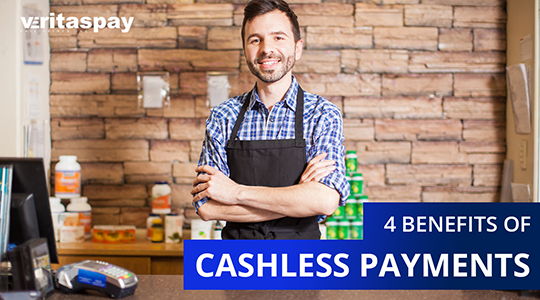Visa believes PH can be a cashless society in 10 years
Posted: May 2022

Talks about the rapid progression of cashless payments have been non-stop over the last two years, mainly due to the COVID-19 pandemic and what it entails. In fact, it may be entering a new echelon of forecast: cashless society.
What does ‘cashless society’ mean? It’s just how it sounded.
Cashless society is where a country is, at the very least, dominantly using digital payments to pay for goods and services – it may be cards, e-wallets, or anything monetary that isn’t physical cash.
Because of the pandemic’s undying influence, among other things, Visa believes that such can be achieved by the Philippines within a decade. Such is an eyebrow-raising prediction, but it did come from a strong source: Visa’s Consumer Payment Attitudes 2021 (CPA 2021).
Here’s what Visa country manager for the Philippines Dan Wolbert recently said:
Filipinos believe COVID-19 has accelerated the country’s transition to a cashless society by at least three years. Now, seven out of 10 consumers anticipate that the Philippines can become fully cashless within the next seven to 10 years.
Nevertheless, the claim is also on the heels of Visa finding that roughly 60% Filipinos carried less cash in 2021. Even more interesting: 84% of them have tried going fully cashless.
It is also more significant when compared to the previous findings, as it is 5% higher. So, whatever skepticism one may have, we really can’t argue much since it is simply based on a reliable study.
Wolbert continued relaying his belief by reiterating pinoys’ growing preference:
While cash is still commonplace in the Philippines, the preference for cashless payments is clearly gaining momentum. Our study showed more Filipinos are confident to get by without cash and for longer periods of time - with more than half feeling confident to get by for a week or longer, as cashless payment options grow
Furthermore, the same study revealed that 38% of the respondents believe their payments will be fully digital by 2025. A larger chunk of individuals think that the transition will take longer, but such a figure is pretty considerable as well, and that's what Wolbert and his team are hinging their prediction on.
Which expenses are leading the way?
Also found in the annual report are the type of expenditure that’s topping the list: bills payments, shopping, which includes both supermarket and retail shopping, and content platform subscription. All three are expected given how it’s among the most common things we all pay for. It probably helped that travel and tourism were basically non-existent for the entire 2020 and a good portion of 2021.
Visa has had its shares of hits and misses, but pandemic or no pandemic, the undeniable progression of fintech is telling. It should be interesting to see if consumers will return to the classic ways or stay the course when it comes to payments.
As VeritasPay continues to provide high-quality payment solutions and promote cashless transactions, the company is also dedicated in bringing in fresh and informative content. We’ll be continuing to share new articles about our products, services, and varying subjects within the industry as we move forward.
Contact us here to know more.
Related Articles

